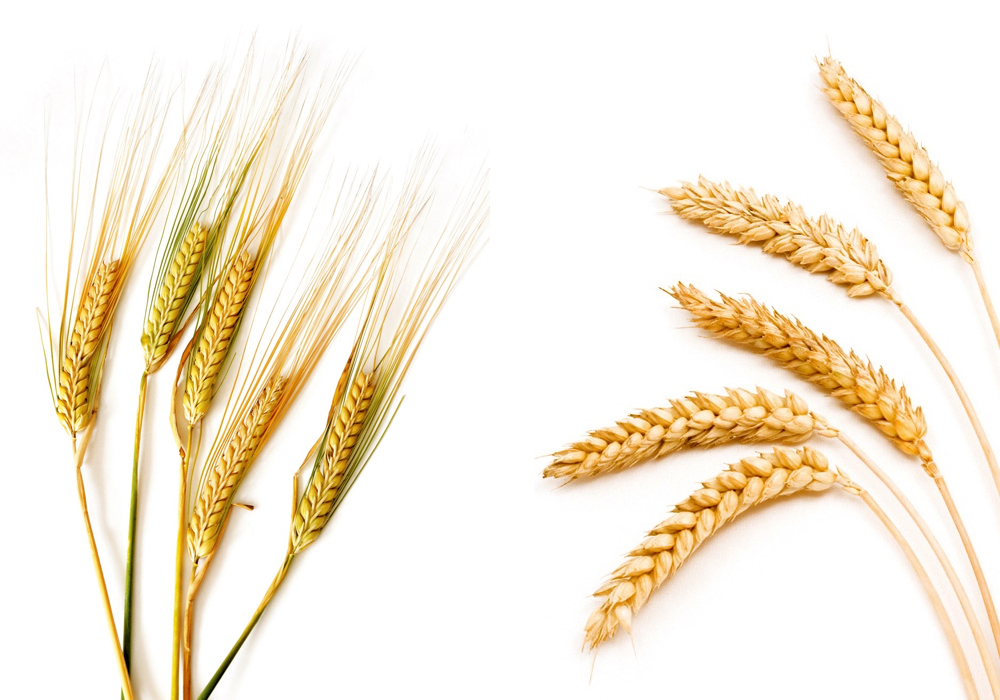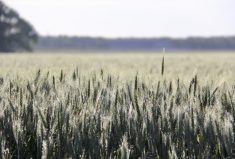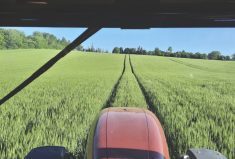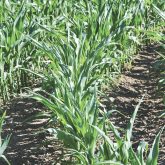When the Canadian Wheat Board was losing the single desk, there was no shortage of dire predictions about what the fallout might be.
Even many of those in favour of an open market conceded that there were a lot of moving parts, and it was going to be necessary to proceed with caution lest very important issues get missed, lost or dropped.
As August 1, 2012 loomed closer, policy wonks of all stripes furrowed their brows and got down to business.
More than three years on, it seems they’ve been largely successful. The sun continued to rise and set and wheat and barley found their way to world markets. That’s not to say it’s been a seamless transition, but it’s seemed at least manageable.
Read Also

Sensing the soil: Root cell research finds ‘stress hormone’
Research into how root cells react to soil stressors could help plants better adapt to changes in their climate.
What is a little difficult is keeping track of all the changes.
Agricultural economist Richard Gray of the University of Saskatchewan says it’s a bit of a mixed bag when it comes to how things have reorganized following deregulation, as one might expect, but there are plenty of positives to focus on.
“A lot of the really important pieces did get picked up,” Gray says. “Cigi (Canadian International Grains Institute) remained intact, for example, and there was a recent study conducted by the Australian Export Grains Innovation Council that compared the two countries. It was pretty positive on the Canadian system, and identified a number of areas that we were doing better, including Cigi, and that’s an outside look at the system.”
Gray adds that other important agencies like the Western Grains Research Foundation also successfully weathered the transition.
Hiccups
That’s not to say there weren’t hiccups. During this period of deregulation, the Canadian Grain Commission moved from guaranteeing the protein level of each hold of a ship to guaranteeing the protein level of the entire shipment, Gray says. That meant variation from hold to hold which revealed itself in less consistency as the ships were unloaded on the other end and millers struggled to maintain the efficiency of their mills with a constantly changing end product.
“This was causing havoc on the other end, so the grain companies found they needed to revisit this,” Gray says.
Gray adds both Australian and Canadian wheat sectors are struggling with similar challenges in deregulated markets when it comes to extracting premiums for certain products. In Australia multiple sellers have made it much harder for growers to receive any premium for a certain type of wheat prized by Japanese buyers who are making udon noodles. Likewise, Canadian CWRS milling wheat is likely to face future challenges. In both cases the problem is that production is higher than the premium demand.
“We produce far more CWRS than the world needs,” Gray says. “Can we capture a premium in one sector of the market and not another?”
However, most of these issues are relatively minor compared to the 800-pound-gorilla problem — transportation in Western Canada, Gray says. It’s the industry’s greatest challenge compared to other growing regions. The trip to salt water is longer, over rougher terrain and frequently through harsher weather than in any other major grain exporting region. This outsized challenge makes for outsized problems when they arrive, Gray says. “I think one of the most significant gaps is grain transportation logistics. They’ve never really solved this issue.” (See High Velocity, page 22.)
In the country, that meant plugged elevators a couple of winters ago when the system creaked under the massive load of a bumper crop. At port, it meant ships line up awaiting cargoes and racking up penalty fees.
While the CWB is a thing of the past, it did play a central co-ordinating role in ensuring that grain shipments met sales at port, something that hasn’t been replaced in any meaningful way.
Grain companies will probably object to sharing their commercial information with a third-party co-ordin-ator, but Gray notes that there are relatively recent precedents. The Grain Transportation Agency functioned as a referee and co-ordinator from the early ’80s to mid-’90s.
That role extended to mixing and matching available supplies at port elevators owned by various companies — a function that was always meant to be replaced by a cash market at port that allowed the various grain companies to make similar transactions. However that particular market has never functioned, Gray says.
“There needs to be the same sort of vision that established the Winnipeg Grain Exchange,” Gray says.
Value Chain
One hole that definitely needed to be filled was a value chain organization that represented all the stakeholders in the newly deregulated cereals sector.
It’s a model with a proven track record in other sectors, as evidenced by the Canola Council of Canada and Pulse Canada.
Cam Dahl is the inaugural president of Cereals Canada, and he lays out the new organization, its mandate and key goals.
“While not specifically modelled after the Canola Council or Pulse Canada, there are similarities,” Dahl says. “Cereals Canada is specifically formed to be a value chain organization that represents all parts of production.”
That includes farmers from all regions of the country, as well as shippers, exporters and processors plus organizations involved in variety development and research. Those three membership groups all sit at the board table, but no one group holds the balance of power.
“By specific design, no single membership pillar has a majority of board seats,” Dahl explains. Funding is split in a way that does reflect the balance of board seats, with growers picking up 39 per cent of the tab, buyers and processors a further 39 per cent and variety development and research organizations a further 22 per cent.
Cereals Canada has three key areas of focus: market development, innovation and industry leadership.
The market development includes new-crop missions to showcase that season’s harvest.
When Dahl spoke to Country Guide, he was travelling on one of these missions to North Africa, the Middle East and West Africa, and says it was the last leg of the annual effort.This year it covered more than 20 countries and reflected a “Team Canada” approach Dahl says.
“It includes Cereals Canada, Cigi, the Canadian Grain Commission, exporters and producers,” Dahl says. “The purpose is to provide technical support for current customers, technical information for prospective customers and feedback to the entire Canadian value chain.”
Research priorities
Innovation will revolve primarily around working to develop national research priorities for wheat, Dahl says. The model aims to bring together all the stakeholders to build a national strategy. Cereals Canada’s specific goals will include working to ensure the needs of end-use customers are incorporated into research objectives.
Industry leadership is a large and somewhat vague title, but Dahl says the two key pieces will be fostering common goals for the cereals sector and ensuring a common message to both international customers and various levels of government in Canada. Specifically that’s meant advocating positions in the wheat class review, variety registration reform, “Team Canada” trade missions, and representation on industry round tables.
Grower groups from around the country have signed on, including the Atlantic Grains Council, Les Producteurs de Grains du Quebec, Grain Farmers of Ontario, Manitoba Wheat and Barley Growers Association, the Alberta Wheat Commission and the B.C. Grain Producers Association.
“The one exception to date is the Saskatchewan Wheat Development Commission which has not yet accepted our invitation to join,” Dahl says. “The door has, and will, remain open to them.”
In the meantime Dahl says a board member from Saskatchewan represents their interests at the national level.
Research focus
One of the newest grower groups is the Manitoba Wheat and Barley Growers Association. Executive director Brent Vankoughnet says the organization, and others like it in the other provinces, will be the voice of farmers and will advocate for farmer interests. So far the MWBGA has focused mainly on research, which members have identified as needing more work.
“We’ve gotten set up over the past couple years, and set up the checkoff, which has given us a revenue stream to commit to what we feel are a number of well-focused research projects,” Vankoughnet says.
A full list is available on the organization’s website, but major projects include looking at variables that may influence gluten strength in CWRS, developing new genomic tools to accelerate wheat breeding, fusarium head blight research and fusarium testing.
While much of the work and the model will be familiar to growers who are long accustomed to industry associations, Vankoughnet says the new cereals groups differ in one key way.
“Most of these associations were formed for new crops that were growing in acreage,” he says. “In this case, they’re for a sector that’s already established and won’t be growing at 15 per cent a year. If anything, some would say our challenge will be ‘How do we halt the exodus?’” he says.
One key will be varietal development, which for wheat is challenging. Vankoughnet says the organization would be working with other organizations like the WGRF and the groups from other provinces to optimize the role of producers in varietal development in order to ensure future varieties are meeting grower needs.
Market Development
The Canadian International Grains Institute (Cigi) was established in 1972 to promote Canadian field crops internationally and was jointly funded by farmers through the Canadian Wheat Board and the federal government.
As deregulation loomed, many worried the organization might become one of the unfortunate casualties of the shift. However, it actually became one of the agents of change, as it took on a larger role and garnered interim funding, mainly from farmers through the Western Wheat and Barley Checkoff.
Cigi executive director JoAnne Buth says the organization acted much like a placeholder in the three years following deregulation. During that time the main objective was to ensure that market development work didn’t get missed in the inevitable uncertainty as the industry charted new waters.
That meant “new crop missions” — annual visits to buyers to give them information on the quality of the latest Canadian crop, as well as continuing Cigi’s traditional role in providing milling, baking and processing expertise to buyers. It’s also meant growing into a new and more independent role in establishing and expanding relationships with other players in the grain industry.
“I always tell people that it’s an evolutionary process, not a revolutionary one,” Buth told Country Guide recently.
On her watch the organization has continued to work with industry stakeholders like Pulse Canada and the new Cereals Canada, offering technical expertise as well as insight into industry trends in various parts of the globe.
“I hope we’ll continue to work closely with these organizations,” Buth says. “Pulse Canada really has the whole value chain at their table, which is very valuable for the industry, and Cereals Canada is working very hard to get the whole chain on board. We think they’ll be a very strong partner to keep working with.”
Buth says that what’s still needed is a funding formula that recognizes that growers aren’t the sole beneficiaries of Cigi’s work, and shouldn’t be the sole funders. Cigi is talking to industry about what form its support may take.
“This is a message we’ve heard very clearly from producers, and have taken to heart,” she says.
Buth also says the organization wants to continue to offer training and information for growers in the form of programs like the popular Combine to Customer course, which brings farmers to Winnipeg to see Cigi’s processing facilities.
“The program is so popular there’s a waiting list, because farmers have told us they value the information they get through it so much,” Buth says. “We want to keep offering them valuable insight into how things are structured and work together, and also feedback from customers on how their crops are used and what’s important to the end-users.”
This article was originally published as “Making change” in the February 16, 2016, issue of Country Guide












